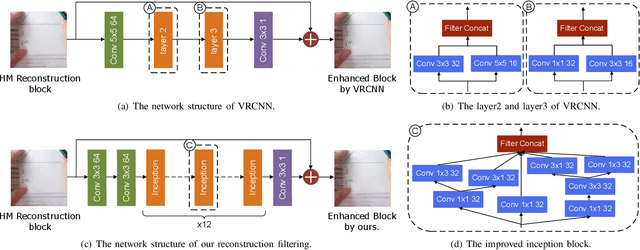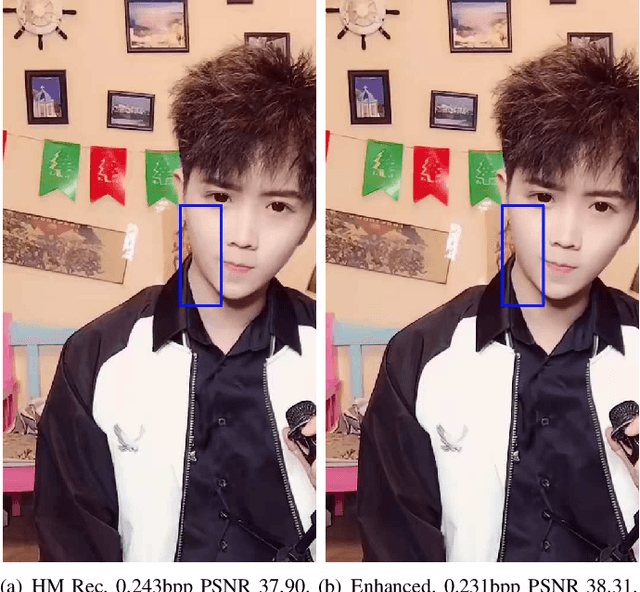Masaru Takeuchi
Dual Learning-based Video Coding with Inception Dense Blocks
Nov 22, 2019



Abstract:In this paper, a dual learning-based method in intra coding is introduced for PCS Grand Challenge. This method is mainly composed of two parts: intra prediction and reconstruction filtering. They use different network structures, the neural network-based intra prediction uses the full-connected network to predict the block while the neural network-based reconstruction filtering utilizes the convolutional networks. Different with the previous filtering works, we use a network with more powerful feature extraction capabilities in our reconstruction filtering network. And the filtering unit is the block-level so as to achieve a more accurate filtering compensation. To our best knowledge, among all the learning-based methods, this is the first attempt to combine two different networks in one application, and we achieve the state-of-the-art performance for AI configuration on the HEVC Test sequences. The experimental result shows that our method leads to significant BD-rate saving for provided 8 sequences compared to HM-16.20 baseline (average 10.24% and 3.57% bitrate reductions for all-intra and random-access coding, respectively). For HEVC test sequences, our model also achieved a 9.70% BD-rate saving compared to HM-16.20 baseline for all-intra configuration.
Deep Convolutional AutoEncoder-based Lossy Image Compression
Apr 25, 2018



Abstract:Image compression has been investigated as a fundamental research topic for many decades. Recently, deep learning has achieved great success in many computer vision tasks, and is gradually being used in image compression. In this paper, we present a lossy image compression architecture, which utilizes the advantages of convolutional autoencoder (CAE) to achieve a high coding efficiency. First, we design a novel CAE architecture to replace the conventional transforms and train this CAE using a rate-distortion loss function. Second, to generate a more energy-compact representation, we utilize the principal components analysis (PCA) to rotate the feature maps produced by the CAE, and then apply the quantization and entropy coder to generate the codes. Experimental results demonstrate that our method outperforms traditional image coding algorithms, by achieving a 13.7% BD-rate decrement on the Kodak database images compared to JPEG2000. Besides, our method maintains a moderate complexity similar to JPEG2000.
 Add to Chrome
Add to Chrome Add to Firefox
Add to Firefox Add to Edge
Add to Edge